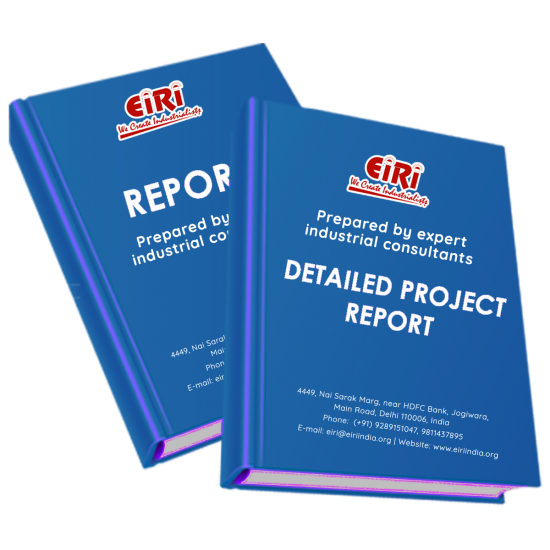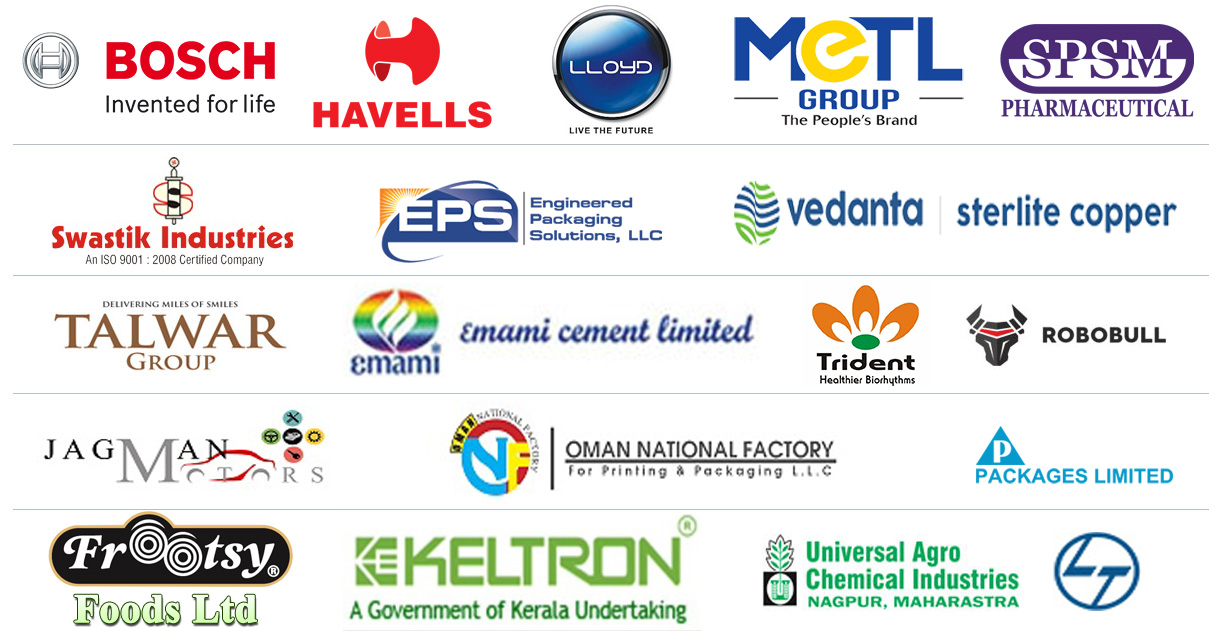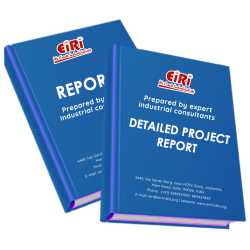Detailed Project Report on i.v. fluid (ffs technology)

- More than 40 years of experience
- Managed by expert industrial consultants
- ISO 9001-2015 Certified
- Registered under MSME, UAM No: DL01E0012000
- 24/5 Research Support
Get your quesries resolved from an industry expert. Ask your queries before report or book purchase. - Custom Research Service
Speak to the our consultant to design an exclusive study to serve your research needs. - Quality Assurance
All reports are prepared by highly qualified consultants & verified by a panel of experts. - Information Security
Your personal & confidential information is safe & secure.
I.V. FLUID (FFS TECHNOLOGY) [3550]
Normal Saline (0.9% NaCl): Isotonic salt water.154 mEq/L Na+; 154 mEq/L Cl-; 308mOsm/L.Cheapest and most commonly used resuscitative crystalloid. High [Cl-] above the normal serum 103mEq/L imposes on the kidneys an appreciable load of excess Cl- that cannot be rapidly excreted. When saline is injected intravenously, it compensate the deficiency of sodium ions when dextrose is injected it gives energy due to glucose content of it when dextro-saline is given in combination, it replanishes the dehydration as well as gives energy thereby recouping debility syndrome and also in general take care of malaise. Intravenous fluids are chemically prepared solutions that are administered to the patient. They are tailored to the body’s needs and used to replace lost fluid and/or aid in the delivery of IV medications. For patients that do not require immediate fluid or drug therapy, the continuous delivery of a small amount of IV fluid can be used to keep a vein patent (open) for future use. IV fluids come in different forms and have different impacts on the body. Therefore, it is important to have an understanding of the different types of IV fluids, along with their indications for use. How Intravenous Fluids are created. There are several types of IV fluids that have different effects on the body. Some IV fluids are designed to stay in the intravascular space (intra, within; vascular, blood vessels) to increase the intravascular volume, or volume of circulating blood. Other IV fluids are specifically designed so the fluid leaves the intravascular space and enters the interstitial and intracellular spaces. Still others are created to distribute evenly between the intravascular, interstitial, and cellular spaces. The properties that an IV solution has within the body depends on how it is created and the specific materials it contains. It also determines the best type of IV solution to use in relation to the patient’s needs. The majority of an IV solution is sterile water. Chemically, water is referred to as a “solvent.” A solvent is a substance that dissolves other materials called “solutes.” Within IV solutions, the solutes can be molecules called electrolytes (charged particles such as sodium, potassium, and chloride) and/or other larger compounds such as proteins or molecules. Today, a growing number of pharmaceutical manufacturers are using advanced aseptic processing technologies to minimize operator intervention and contamination risk in the filling and packaging of liquid parenteral drugs. One of these technologies is form-fill-seal (FFS), in which a polymeric material is formed and sealed inline to a container of choice, while the container is being filled. FFS offers cost savings over conventional aseptic processing in glass. Traditional parenteral filling and packaging requires 23 steps and individual machines for filling, stoppering and capping. In contrast, FFS requires one piece of automated machinery, and takes place in six seconds or less. The entire FFS process is performed under a class-100 laminar flow, preventing external contamination. The fully automatic, computer-controlled technology allows for filling and packaging of up to 3,00,000 bottles of IV fluid per day. Nitrogen purging options are available for sensitive formulations such as amino acids. Three key concepts in consideration of fluid and Three key concepts in consideration of fluid and electrolyte management: electrolyte management: Cell membrane permeability cell membrane permeability, Osmolarity osmolarity, Electroneutrality electroneutrality. Cell membrane permeability refers to the ability of a Cell membrane permeability refers to the ability of a cell membrane to allow certain substances such as cell membrane to allow certain substances such as water and urea to pass freely, while charged ions water and urea to pass freely, while charged ions such as sodium cannot cross the membrane and are such as sodium cannot cross the membrane and are trapped on one side of it. Trapped on one side of it. Osmolarity Osmolarity is a property of particles in solution. is a property of particles in solution. If a substance can dissociate in solution, it may substance can dissociate in solution, it may contribute more than one equivalent to the contribute more than one equivalent to the osmolarity osmolarity of the solution. of the solution. For instance, For instance, NaCl will dissociate into two dissociate into two osmotically osmotically active ions: Na and active ions: Na and Cl. One millimolar millimolar NaCl yields a 2 yields a 2 milliosmolar milliosmolar solution. Electroneutrality Electroneutrality means that the overall number of means that the overall number of positive and negative charges balances. positive and negative charges balances. For instance, in conditions like renal tubular acidosis instance, in conditions like renal tubular acidosis where HCO3 where HCO3-is lost, chloride is retained leading to a is lost, chloride is retained leading to a hyperchloremic hyperchloremic state. Expected Expected osmolarity osmolarity of plasma can be calculated of plasma can be calculated according to the following formula: according to the following formula: Osmolarity Osmolarity (mOsm/kg) = 2 /kg) = 2×[mEq/L N [mEq/L Na+] + glucose+ BUN ] + glucose+ BUN. Concentration of sodium is the major determinant. Concentration of sodium is the major determinant. Normal serum Normal serum osmolarity osmolarity ranges from about 280 to ranges from about 280 to 295 mOsm/kg. Maintenance fluids must be determined for basic Maintenance fluids must be determined for basic requirements, then existing volume or electrolyte requirements, then existing volume or electrolyte deficits must be evaluated to determine the deficits must be evaluated to determine the appropriate IV fluid to use and the volume to appropriate IV fluid to use and the volume to administer.
COST ESTIMATION
Plant Capacity 120000 Bottle/Day
Land & Building (8000 sq.mt) Rs. 5.65 Cr
Plant & Machinery Rs. 25 Cr
Working Capital for 2 Months Rs. 6.31 Cr
Total Capital Investment Rs. 37.44 Cr
Rate of Return 38%
Break Even Point 46%
INTRODUCTION
TYPES OF IV FLUID
COMMONLY USED IV FLUIDS
HOW INTRAVENOUS FLUIDS ARE CREATED
IV FLUID/ELECTROLYTE THERAPY
KEY TERMS
DEXTROSE
DEXTROSE SALINE INJECTION
PROPERTIES
TABLE I. PHYSICAL PROPERTIES OF D-GLUCOSE
TABLE 2. SOLUBILITY OF DEXTROSE IN WATER
REQUIREMENTS OF RAW MATERIALS
TABLE I: REQUIREMENT FOR DEXTROSE MONOHYDRATE
EXPORT OPPORTUNITY OF INTRAVENOUS SOLUTION
LOCAL MANUFACTURING ACTIVITIES
HS CODES
WORLD MARKET TRENDS IMPORTS & EXPORTS
MAJOR INTERNATIONAL IMPORTING COUNTRIES
MAJOR IMPORTING COUNTRIES - MENA REGIONAL & GCC
COMPETITION - MAJOR EXPORTING COUNTRIES
ESTIMATE OF IMPORTER’S LANDED COSTS
ECONOMIC PROFILE
WORLD MARKET CONSUMPTION
SOURCE OF MACHINES TECHNOLOGY
GLOBAL MARKET OVERVIEW OF IV FLUID
GEOGRAPHICAL SEGMENTATION OF THE INTRAVENOUS SOLUTIONS MARKET
COMPETITIVE LANDSCAPE AND KEY VENDORS
KEY VENDORS IN THIS MARKET ARE -
GROWTH DRIVERS, CHALLENGES, AND UPCOMING TRENDS:
HOME TREATMENT
USES AND APPLICATION
SOME GENERAL INTRAVENOUS FLUIDS
SPECIFICATION OF INDIAN PHARMACOPEIA ON I.V FLUIDS DEXTRAN 40 INJECTION
DEXTRAN 110 INJECTIONS
B.I.S. SPECIFICATIONS FOR PLASTIC I.V. BOTTLES
SODIUM CHLORIDE AND DEXTROSE INJECTION
IDENTIFICATION:-
ASSAY:
BASIC RAW MATERIALS
REQUIREMENTS OF RAW MATERIALS AND SPECIFICATIONS
WATER FOR INJECTION
HDPE PHARMA GRADE LAMINATE/ PLASTIC ROLL
LABELING
IDENTIFICATION
HEAVY METALS
COMPOSITION OF IV FLUID
COMPOSITION OF COMMON IV FLUID (MEQ/L)
COMPOSITION OF IV FLUIDS
COMPOSITION OF COMMERCIAL I.V. FLUID AVAILABLE
BASIS OF BFS TECHNOLOGY
BLOW FILL SEAL (BFS) AND FORM FILL SEAL (FFS) TECHNOLOGY
CONCEPT OF BFS
MANUFACTURING PROCESS OF I.V. FLUID (FFS TECHNOLOGY)
PROCESS FLOW DIAGRAM
PROCESS IN DETAILS
1. DISTILLED WATER PREPARATION:-
2. SOLUTION PREPARATION :-
3. INJECTION BLOW MOULDING
4. MOULDING PROCESS
5. FILLING PROCESS
6. SEALING PROCESS
7. MOULD OPENING PROCESS
FILTRATION AND FILLING:-
STERILIZATION:-
QUALITY CONTROL:-
FLOW DIAGRAM OF MANUFACTURING OF I.V. FLUIDS
SWOT ANALYSIS
FORM FILL SEAL TECHNOLOGY
1. FORM-FILL-SEAL TECHNOLOGY:-
1.5 FILTRATION (MEMBRANE):-
LIST OF MACHINERY IV BAG PRODUCTION FORM FILL AND SEAL MACHINE
IV BAG PRODUCTION (IV PRODUCTION AND PACKING)
IV BAG EMPTY PRODUCTION LINE
1. WATER PURIFYING
2. DISTILLATION
3. SOLUTION FILLING
4. STERILIZATION
5. PACKING
A TYPICAL FFS PROCESS WORKS AS FOLLOWS.
SUPPLIERS OF RAW MATERIALS
POTASSIUM PERMANGANATE
SODIUM CHLORIDE (I.P. GRADE)
DEXTROSE
SUPPLIERS OF PLANT AND MACHINERY
STERILIZING EQUIPMENTS
PM METER
LABELING MACHINES
TANKS
BOILER
FILTER PRESS
LABORATORY EQUIPMENTS
MIXER
EMPTY IV BAG MANUFACTURER AND SUPPLIER IN INDIA
SUPPLIERS OF COMPLETE PLANT AND MACHINERY
CONSULTANT OF TURNKEY PROJECT SUPPLIER OF THE PLANT
AND MACHINERY
CLEAN ROOM SUPPLIERS
MACHINERY CATALOG
APPENDIX – A:
01. PLANT ECONOMICS
02. LAND & BUILDING
03. PLANT AND MACHINERY
04. OTHER FIXED ASSESTS
05. FIXED CAPITAL
06. RAW MATERIAL
07. SALARY AND WAGES
08. UTILITIES AND OVERHEADS
09. TOTAL WORKING CAPITAL
10. TOTAL CAPITAL INVESTMENT
11. COST OF PRODUCTION
12. TURN OVER/ANNUM
13. BREAK EVEN POINT
14. RESOURCES FOR FINANCE
15. INSTALMENT PAYABLE IN 5 YEARS
16. DEPRECIATION CHART FOR 5 YEARS
17. PROFIT ANALYSIS FOR 5 YEARS
18. PROJECTED BALANCE SHEET FOR (5 YEARS)
How to Make Project Report?
Detailed Project Report (DPR) includes Present Market Position and Expected Future Demand, Technology, Manufacturing Process, Investment Opportunity, Plant Economics and Project Financials. comprehensive analysis from industry covering detailed reporting and evaluates the position of the industry by providing insights to the SWOT analysis of the industry.
Each report include Plant Capacity, requirement of Land & Building, Plant & Machinery, Flow Sheet Diagram, Raw Materials detail with suppliers list, Total Capital Investment along with detailed calculation on Rate of Return, Break-Even Analysis and Profitability Analysis. The report also provides a birds eye view of the global industry with details on projected market size and then progresses to evaluate the industry in detail.
We can prepare detailed project report on any industry as per your requirement.
We can also modify the project capacity and project cost as per your requirement. If you are planning to start a business, contact us today.
Detailed Project Report (DPR) gives you access to decisive data such as:
- Market growth drivers
- Factors limiting market growth
- Current market trends
- Market structure
- Key highlights
Overview of key market forces propelling and restraining market growth:
- Up-to-date analyses of market trends and technological improvements
- Pin-point analyses of market competition dynamics to offer you a competitive edge major competitors
- An array of graphics, BEP analysis of major industry segments
- Detailed analyses of industry trends
- A well-defined technological growth with an impact-analysis
- A clear understanding of the competitive landscape and key product segments
Need Customized Project Report?
- Ask for FREE project related details with our consultant/industry expert.
- Share your specific research requirements for customized project report.
- Request for due diligence and consumer centric studies.
- Still haven't found what you're looking for? Speak to our Custom Research Team
About Engineers India Research Institute:
Note: We can also prepare project report on any subject based on your requirement and country. If you need, we can modify the project capacity and project cost based on your requirement.
Our Clients

Our Approach
- Our research reports comprehensively cover Indian markets (can be modified as per your country), present investigation, standpoint and gauge for a time of five years*.
- The market conjectures are produced on the premise of optional research and are cross-accepted through associations with the business players
- We use dependable wellsprings of data and databases. What's more, data from such sources is handled by us and incorporated into the report
Why buy EIRI reports?
- Our project reports include detailed analysis that help to get industry Present Market Position and Expected Future Demand.
- Offer real analysis driving variables for the business and most recent business sector patterns in the business
- This report comprehends the present status of the business by clarifying a complete SWOT examination and investigation of the interest supply circumstance
- Report gives investigation and top to bottom money related correlation of real players/competitors
- The report gives gauges of key parameters which foresees the business execution






















